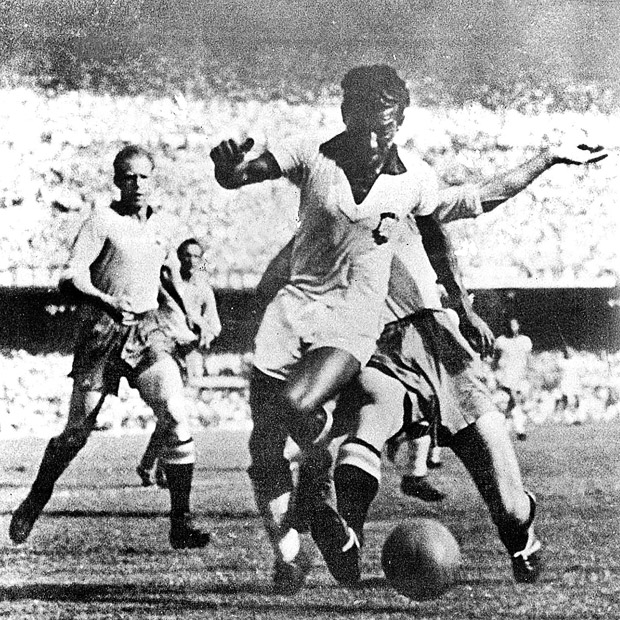You like to believe that India sending rockets into space or South Africa building soccer stadiums for international competitions will bring something meaningful to poor people in those countries: infrastructure, information, medicine, money. That’s questionable, but even if that occurs, it’s painful to crane your neck past the horrors to get a good view of the action. But most of the Western reporting about such events focuses on the safety and comfort of the tourists, not the at-risk locals.
The opening of “A Yellow Card,” a Grantland essay by Brian Phillips, an uncommonly graceful writer, about the grandeur of the World Cup being visited upon the poverty of Brazil:
“Three points make a trend, but in a World Cup year, two points are good enough. So here’s one: Early on the morning of October 29, 31-year-old Geisa Silva, a social worker with the Brazilian military police, found her husband’s backpack on their front porch in Rio de Janeiro. Joao Rodrigo Silva Santos was a retired professional soccer player, a journeyman who’d spent most of his career knocking around the Brazilian lower leagues; post-retirement, he ran a food shop in the city’s Realengo neighborhood. He hadn’t come home the night before, and Silva had been worried, jumping up at the sound of every car. Before dawn, she got ready to leave for her job with a police unit responsible for conducting an anti-gang crackdown. When she opened the front door, she saw the backpack. It contained her husband’s severed head.
And here’s point two: Four months earlier, on the afternoon of June 30, during a pickup soccer game in the northeastern Brazilian municipality of Pio XII, a 19-year-old amateur referee named Otavio Jordao da Silva Cantanhede showed a yellow card to his friend, a player named Josemir Santos Abreu. Abreu protested. A fight broke out. Cantanhede pulled a knife and stabbed Abreu twice. Abreu died on the way to the hospital. In retaliation, a group of Abreu’s friends attacked Cantanhede. Cantanhede was — I’m quoting the New York Times — ‘tied up, smashed in the face with a bottle of cheap sugarcane liquor, pummeled with a wooden stake, run over by a motorcycle and stabbed in the throat.’ Then his legs were sawed off. Then his head was cut off and mounted on a wooden post near the field.
And here’s a quick question, just an aside. How do you feel, hearing these stories? I don’t mean how do you think you’re supposed to feel; I mean how do you feel, in fact? Are you intrigued? Disturbed? Sad? Curious? Titillated, in the way that horrifying real-life stories can sometimes leave you titillated? You don’t have to answer. Just think about it.”
Tags: Brian Phillips

